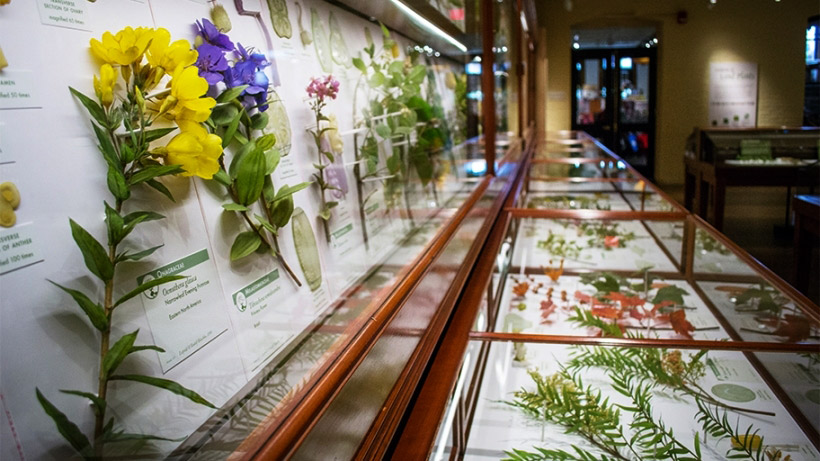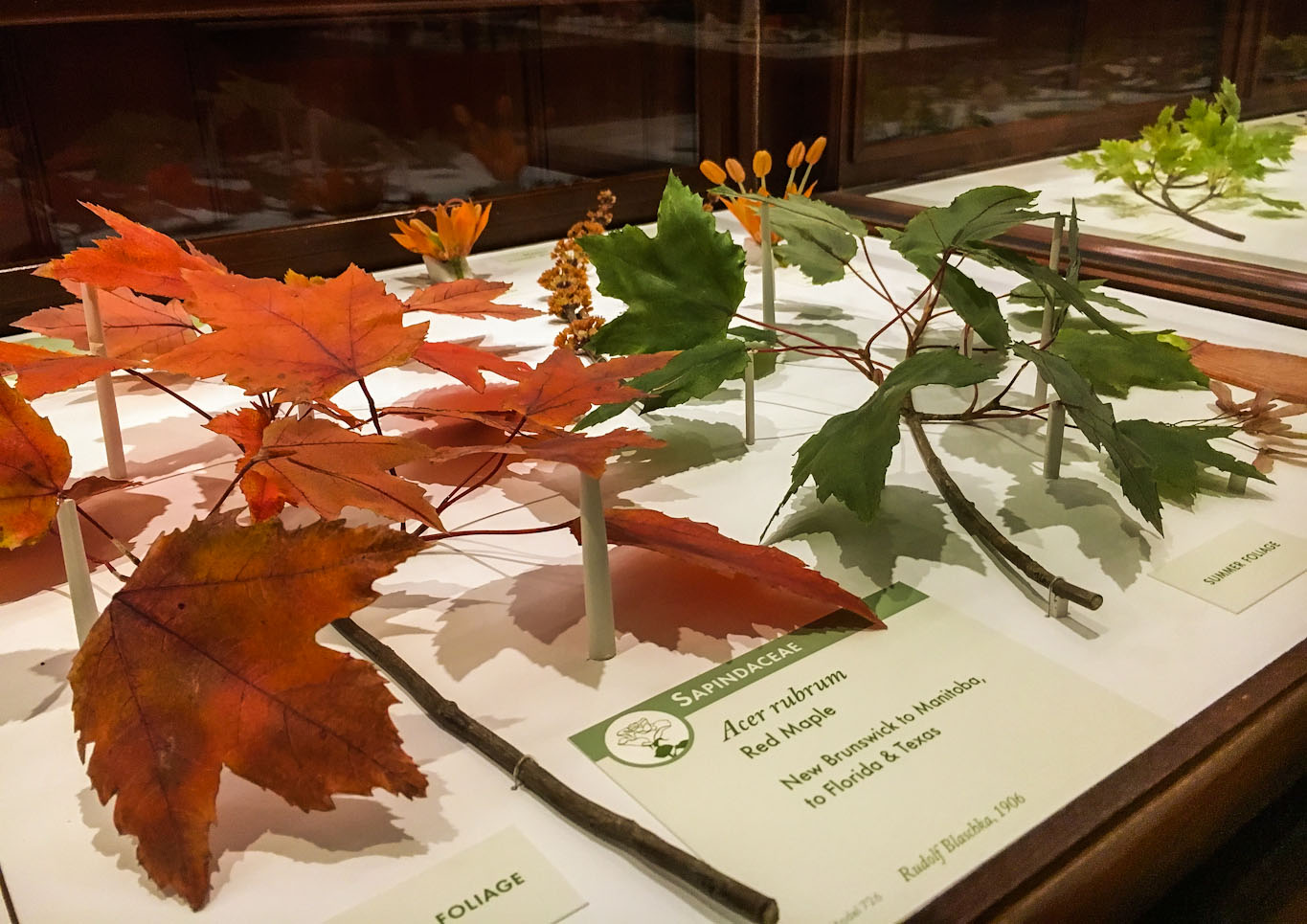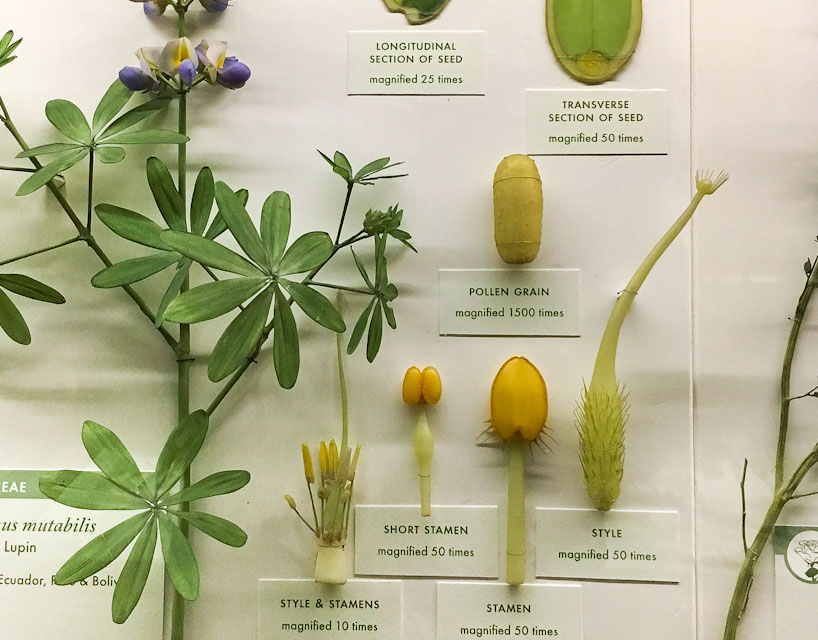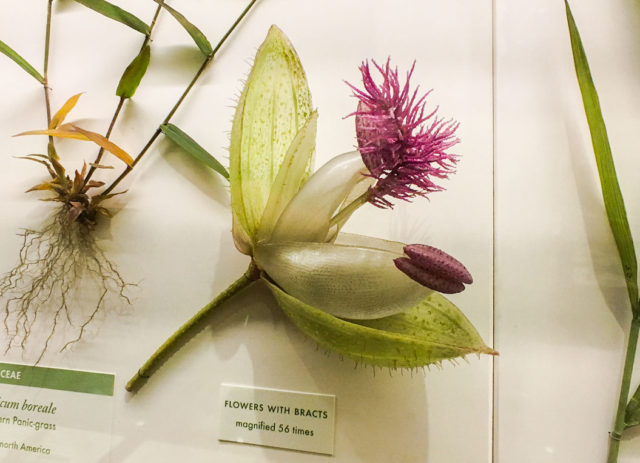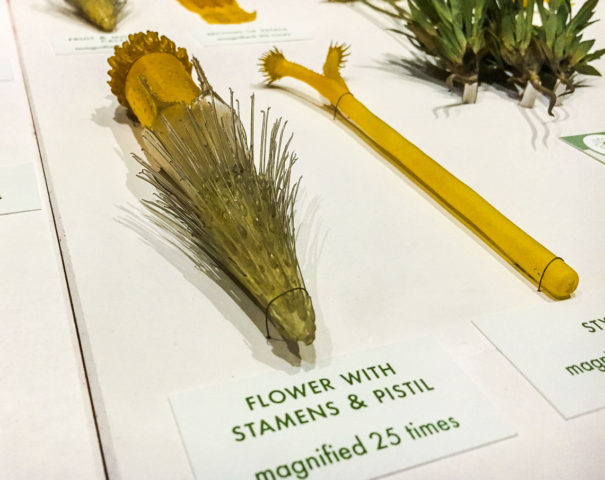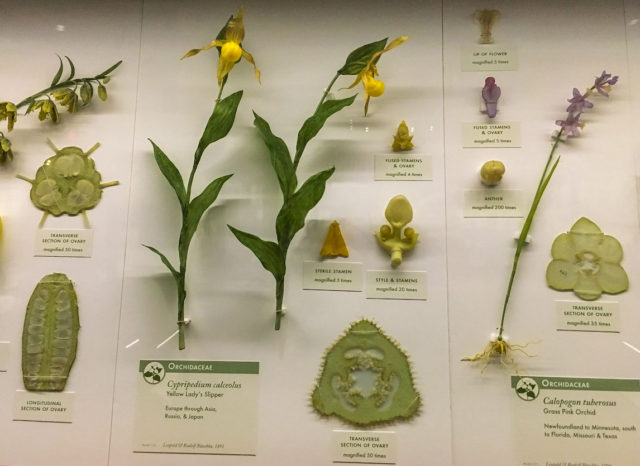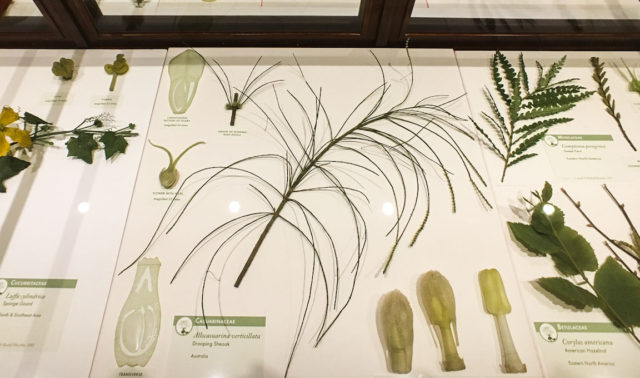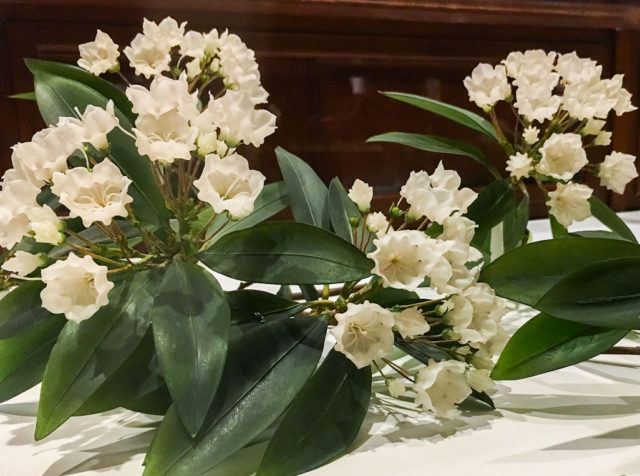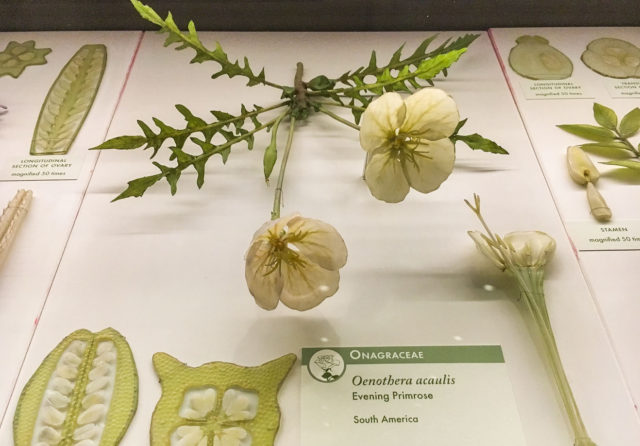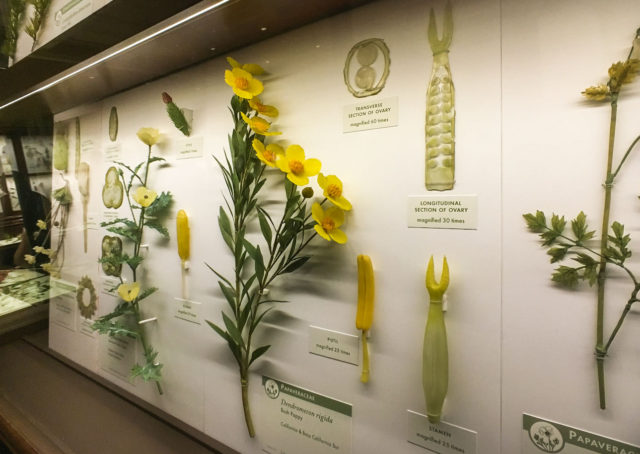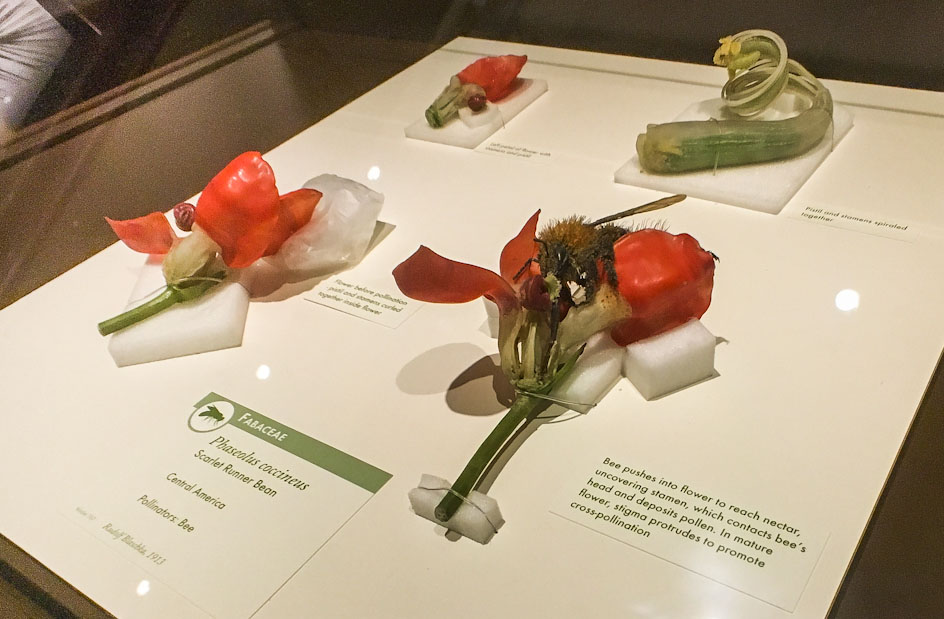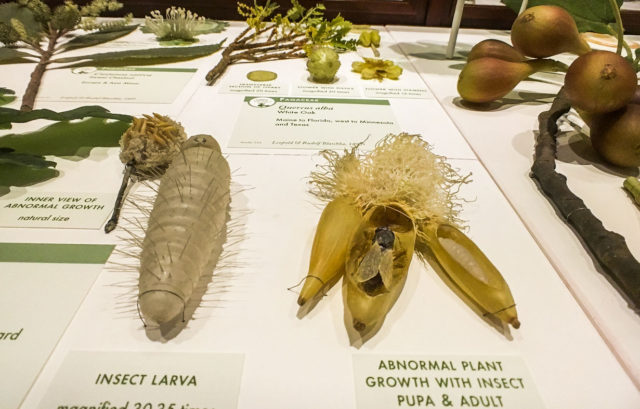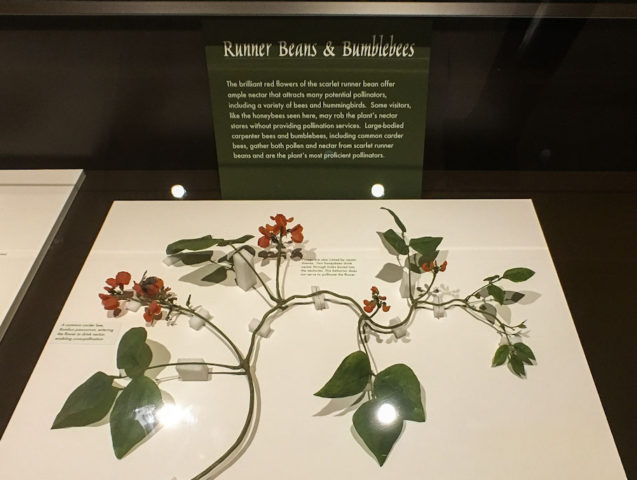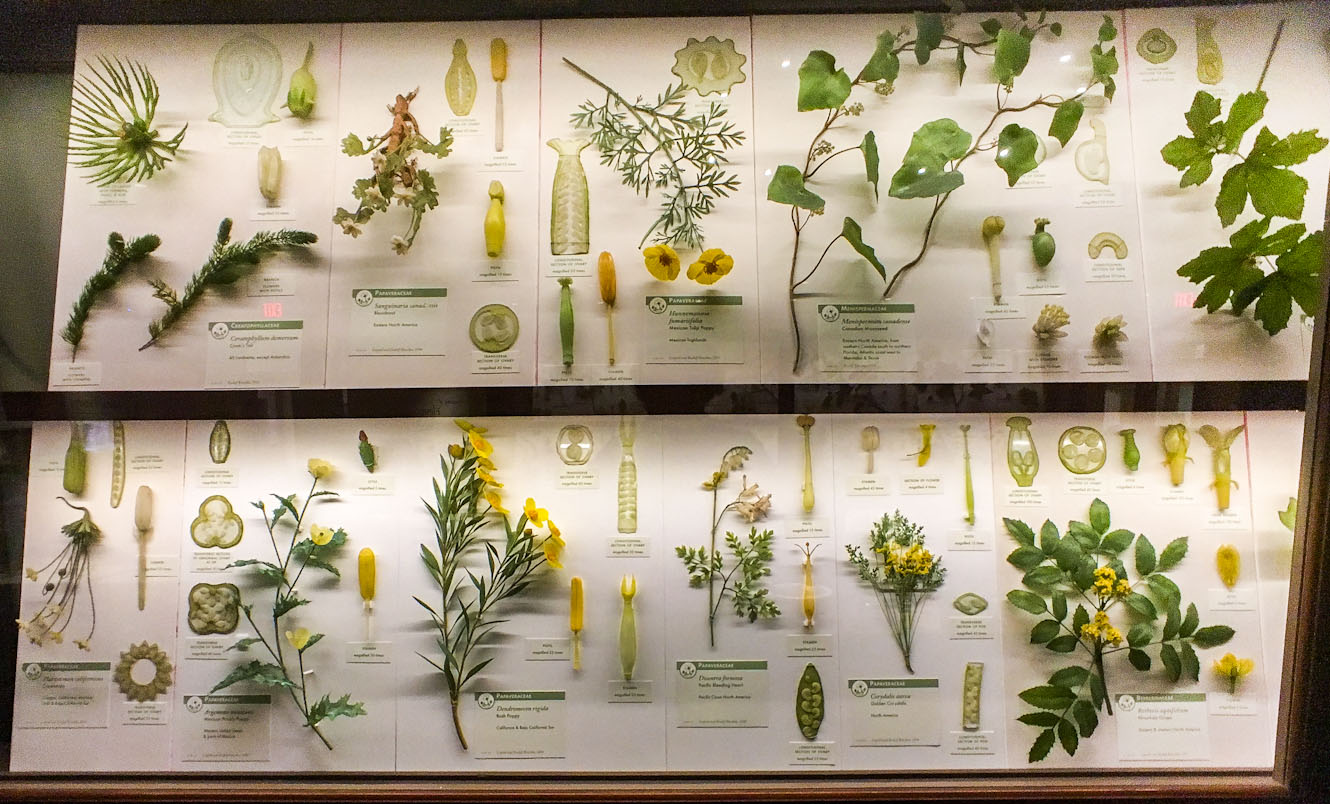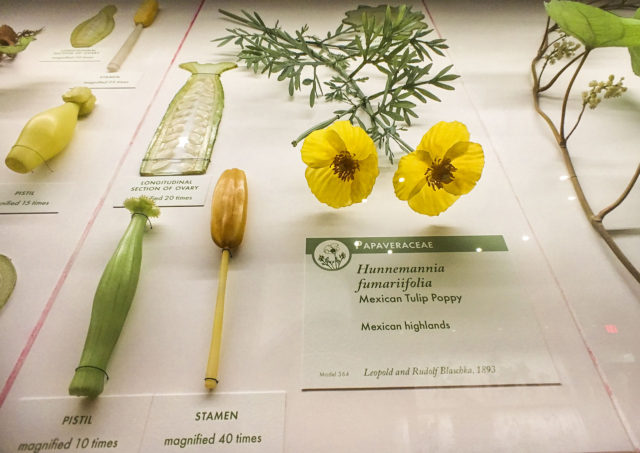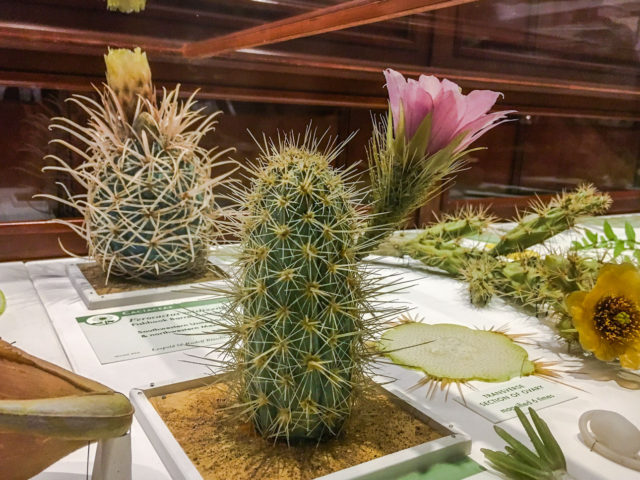The Ware Collection of Blaschka Glass Models of Plants, popularly know as the Glass Flowers is in the Harvard Museum of Natural History, a fantastic, fantastic museum in Boston.
The exhibit has recently been cleaned and refurbished and with new cases with crystal clear glass and organized by plant family to enhance it as a teaching tool – today for museum goers, but originally for the students.
The collection was started for Professor George Lincoln Goodale, founder of the Botanical Museum, who wanted life-like representations of the plant kingdom for teaching botany. At the time, only crude papier-maché or wax models were available.
He found Czech glassworkers Leopold and Rudolf Blaschka from a family of glass makers dating back to the fifteenth century, and between 1886 to 1936 they created glass models of 700 species of flowering and non- flowering plants.
Yes, they are all glass. Every single bit of these flowers including the root balls, stems, leaves, and even dirt are made of glass. Many visitors, including this one, found it incredible, and I often heard gasps of disbelief, one person assuring his companion that much of it was silk.
I won’t go into each description here – I am on vacation after all, but imagine these as teaching tools! Each specimen has multiple parts, with details of the flowers, roots, and cross sections of flower parts.
These masters of glass knew how to observe – many details magnified many times life size, such as the lupine pollen grain above, magnified 1500 times. Or my favorite, below – a grass flower of Northern Panic-grass (Panicum boreale).
Next is a flower detail of Tetraneuris scaposa, Stemmy Four-nerve Daisy – all glass.
Yellow Lady’s Slipper orchid, Cypripedium calceolus:
Drooping She-Oak, Allocasuarina verticillata:
Kalmia latifolia:
Evening Primrose, Oeothera acaulis:
Display case with Bush Poppy, California native plant, Dendromecon rigida
Keeping in mind that these were teaching tools, there are many glass models of insect pollinators showing bees, flies, moths, butterflies, and their adaptations to particular flowers.
Keep reminding yourself: these are glass !
I wonder how the glass blowers knew how this pollution process worked:
No doubt these glass artisans had taxidermy samples to work with, such as these flies:
Even examples of fly larva:
Pardon the lights reflecting on the class case of the beautiful Scarlet Runner bean. I wanted to show the entire display.
The cases are generally displayed well and the overhead lights are well placed to accent each specimen, though reflections are difficult for photography.
My only regret about the exhibit is the dim lighting that does not allow the viewer to see the translucent quality of the glass. (For illustrating this article I have brightened many of the photos.) I am sure the curators don’t want strong light that would deteriorate the colors over time, but I missed seeing the stained glass effect of glowing glass.
Many of the cases are mounted on the walls like the one above, so it is possible for the photographer to find occasional opportunities to shoot up into the flowers to get a glow. Note the yellow flowering Mexican Tulip Poppy above and below:
I also found that I could avoid the glare and see some of the plants better by kneeling on the floor and shooting directly into the case, such as for this cactus. I wonder when this cactus might have flowered in Boston for the Blaschkas to have worked with it ?
It is a phenomenal exhibit and it can only be seen at Harvard’s Natural History Museum. The flowers are too fragile to ever travel, but are marvels of glass making and wondrous teaching tools even if more than a century old. I only wonder how many might have been damaged as they were being handled so long ago.
The craftwork would be nearly impossible to duplicate today but the sense of art is timeless, many rivaling any botanic illustration – but these are real !

